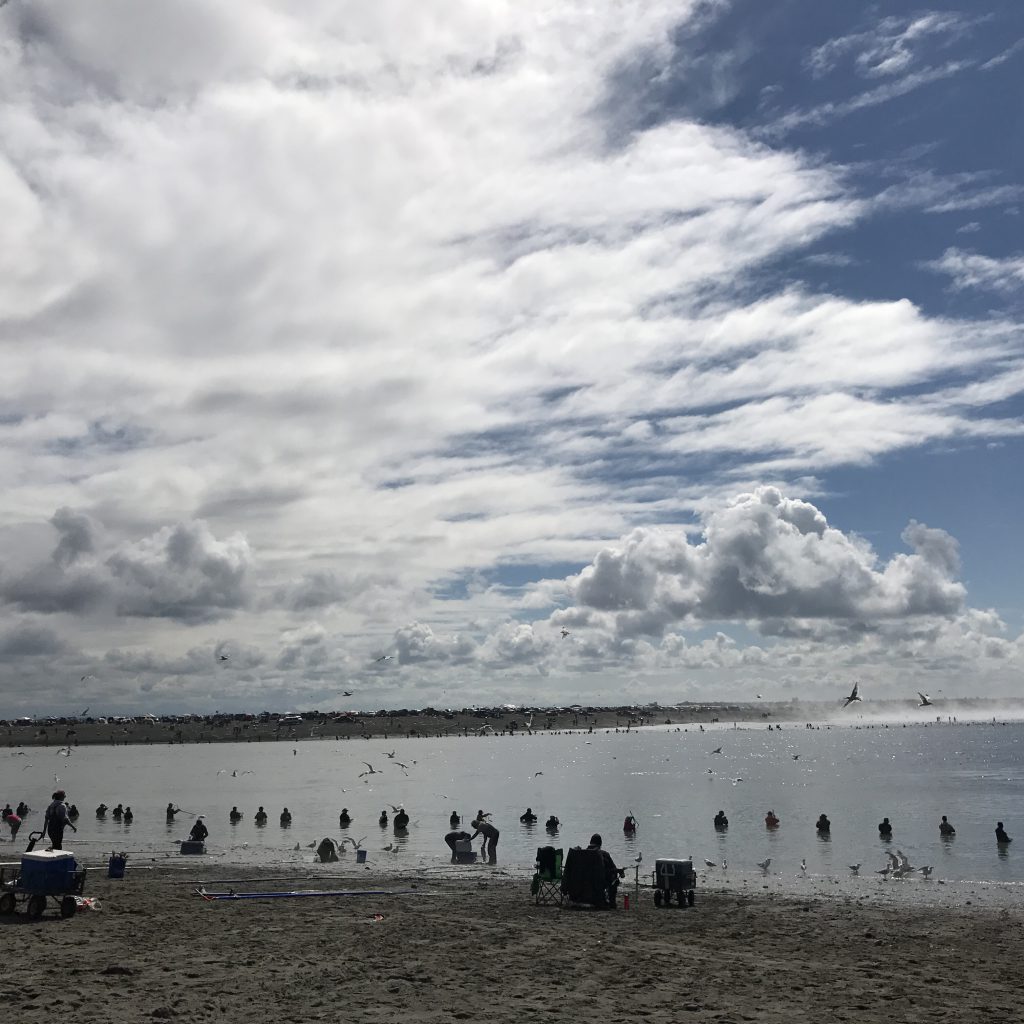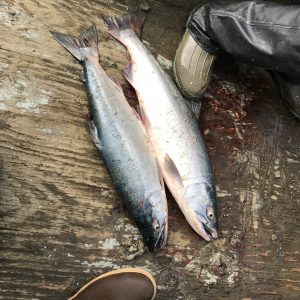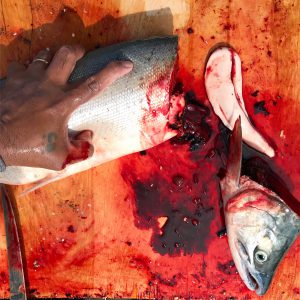I am pretty excited (and was VERY, like going to pass out, nervous) to get the opportunity to contribute a story to The New York Times Dining section this week about the diverse, unique, crowded Kenai River dipnet experience, working with the talented Joshua Corbett.

Here’s how it starts:
KENAI, Alaska — Wenceslous Fru, a physician assistant from Anchorage, stood on the sandy shore of the Kenai River and imagined the dinner he would put together once he felt the jostle of a salmon in his long-handled dip net.
He would make it the way they do back home in Cameroon, splitting it down the belly and opening it like a book, rubbing it with ginger, garlic and spices, and then slipping it under the broiler.
Fishing nearby, Raviwan Dougherty, an Anchorage restaurant worker from Thailand, envisioned steaming hers and bathing it in fish sauce, lime juice and chiles.
Lyubov Miroshnick, who works in a dental office in Wasilla, planned to smoke her catch after a soak in her Ukrainian grandparents’ brine recipe.
“Mainly, we fish for the winter,” said Ms. Miroshnick, who had a dozen family members with her. “That’s how most people survive here. It’s the cheaper way.”
There is no more popular fishery in Alaska than the Kenai (KEEN-eye), a three-hour drive southwest of Anchorage, where millions of sockeye salmon ripple through the silty turquoise water each summer to spawn.
Read the rest here.



Congratulations!! You always had this talent for journalism – even in the early years. Great article.